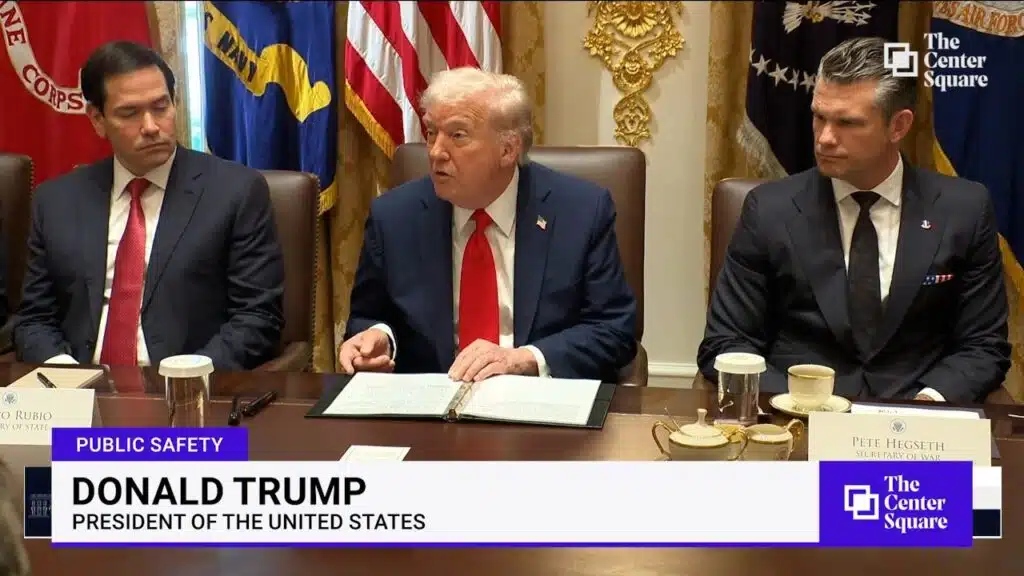
Biden Supports Manchin: The Time to Expand Mining and Streamline Permitting Is Now
The need for a U.S. mining revolution has become as obvious as anything there is in our energy-climate discussion.
The “Energy Transition” is one based on lots more minerals, rare earths, metals, and other “critical materials.”
In fact, green groups should know that more wind, more solar, and more electric cars ensure that we’re now entering the most mineral and metal intensive era in human history.
The example that I use most? Electric cars require 6-7 times more minerals than conventional, oil-based gasoline cars (i.e., the internal combustion engine).
And we’re lacking all over the place: “Copper Shortage Threatens Green Transition.”
President Biden’s lofty electric car goals have no shot of materializing without a lot more domestic mining: “Lithium Is Key to the EV Transition—And It’s in Short Supply.”
Our electrified future is simply impossible without a domestic mining boom.
The U.S. is at least 50% reliant on imports for 51 minerals, with 100% reliance on 15 of those.
The big problem, of course, is that China controls many of these supply chains globally.
For example, we rely on China for about 80% of our rare earths, elements deemed “critical” to the energy transition by experts at the Columbia Climate School.
Nearly 70% of the world’s lithium is refined in China and 80% of the world’s lithium-ion batteries are made there.
And we’ve already seen how China turns inward when the going gets rough: “DHS report: China hid virus’ severity to hoard supplies.”
Any selfishness can only increase since the global race to decarbonize is already making competition for these critical materials increasingly fierce.
And scarily, we’re only in the first inning of this ball game.
Over the next 20 years, the demand for lithium is expected to explode nearly 45 times, graphite, cobalt, and nickel demand will increase up to 25 times, and copper by 145%.
Green groups please take note.
The Alliance for Automotive Innovation’s letter gave the Biden administration a very clear warning: “neither the current trajectory of consumer adoption of EVs, nor existing levels of federal support for supply- and demand-side policies, is sufficient to meet our goal of a net-zero carbon transportation future.”
Unfortunately, the Biden administration seems to be contradicting its own climate goals.
Last year, for instance, the administration canceled the two leases for Twin Metals Minnesota, dealing a potentially fatal blow to the company’s bid to build an underground mine for copper, nickel, and other precious metals essential to our climate goals.
Thankfully, the House GOP is now looking to reverse that unwise decision.
Indeed, coming in tandem with the requirement of much more mining, is the clear need for permitting reform.
Miners face an outdated and excessively complicated permitting process to get operations up and running.
This simply cannot happen: when it comes to climate change and slashing emissions, time is of the essence.
For President Biden’s climate goals, the entire permitting process needs streamlined to grow U.S. innovation and deploy his made-in-America technologies.
Today in the U.S., it can take seven to 10 years for companies to receive approval to mine, which is five times longer than in countries with comparably stringent environmental safeguards, like Australia and Canada.
It’s pretty apparent now that the Biden administration didn’t realize just how integral permitting reform would be in implementing its Inflation Reduction Act, “the single most significant legislation to combat climate change in our nation’s history, investing a total of $369 billion to help build a clean energy economy.”
Because of permitting obstacles, there are nowhere near enough transmission lines to support the transition to a decarbonized electricity grid using much more wind and solar power.
New wind and solar projects “stuck in the queue” continue to mount, while even the ones generating electricity are far too often forced to curtail output because of transmission congestion or lack of transmission access.
This explains why permitting reform has broad bipartisan support, even evolving to the non-partisan stage.
The Brookings Institution reports that most wind projects are quagmired in the permitting phase, with less than a quarter under actual construction.
For the projects that are delayed under the National Environmental Policy Act (NEPA), which both green and oil/gas groups alike agree is overwhelmingly burdensome, nearly 85% are for clean energy resources.
Yet, the reality is that our energy future includes much more renewables but also traditional fuels, namely a lot more natural gas.
Not just for wind and solar, and the tens of thousands of miles of new transmission required, permitting reform will make it easier to build pipelines.
This need is obvious too: at 40% of all generation, natural gas is easily our main source of electricity, and electrification to fight climate change will benefit low-cost, reliable, and abundant gas the most since coal is in structural decline, nuclear faces immense cost overruns, and the case of Germany and California prove how vital gas becomes as the backup when installing naturally intermittent wind and solar power.
The facts? Year after year, summer after summer, the U.S. is continuously setting gas demand records in the power sector.
In addition, more gas infrastructure and pipelines in the U.S. are imperative to help loosen Putin’s grip on our friends.
Just imagine how disastrous it could have been for Europe over the past year if our allies there didn’t have access to U.S. LNG (liquefied natural gas).
Before it invaded Ukraine, Russia supplied nearly 45% of Europe’s gas, a once overwhelming statistic that has now been eroded to 2-3% thanks to U.S. LNG.
U.S. LNG now accounts for 25-30% of the global market, and our exports are slated to about double to 28 Bcf/d over the next five years.
Oil investments are obviously crucial too: any talk of an Energy Transition depends on a stable, healthy economy, and since oil is ingrained in literally everything that we do and consume, higher oil prices inevitably lead to inflation, which surges the price of wind and solar, like it did just last year.
Models for successful permitting reform have come before Congress.
Proposals for reform from Senators Manchin and Capito, Representatives Westerman and Stauber, and some others are a bipartisan recognition of the urgent need to enact changes.
Senator Joe Manchin (D-WV) has been the most persistent and wants to remove the bureaucratic red tape that continues to block us.
Manchin proposed a two-year limit on NEPA environmental reviews and limits on frivolous judicial reviews.
His provision put forth during the last Congress could have created an additional $67 billion in investments in oil and gas alone, resources that meet 65% of our energy needs.
And even conservative estimates have us retaining many trillions of dollars worth of domestic mineral reserves alone under our feet.
We all recognize that the time to act is now: “Biden supports Manchin’s permitting bill, adviser Podesta says.”
Jude Clemente is the editor at RealClearEnergy.
This article was originally published by RealClearEnergy and made available via RealClearWire.


